Table of Contents
Introduction
The working-age population is a central concept in labour statistics. Changes in the size of the working-age population can impact significantly the labour market and the economy. A growing working-age population provides opportunities for economic growth while at the same time creating challenges for job creation and integration of new labour market entrants. By contrast, a shrinking working-age population can create challenges for economic growth, competitiveness, population dependency, etc.
Not everyone that is part of the working-age population, however, is actively engaged in the labour market. Some have jobs, others are seeking jobs, yet others are discouraged, engaged solely in other activities, or not interested in the labour market. Statistics are required to enable us to understand how people are relating to the labour market and how this changes over time. These statistics require clear definitions to ensure consistency and clarity of measurement, reporting and interpretation. As defined in international standards (19th ICLS, 2013), the labour force captures those persons of working age who are actively engaged in the labour market. It is the sum of persons employed and the unemployed. Together these two groups of the working-age population represent the supply of labour for the production of goods and services in exchange for remuneration existing in a country at a given point in time.
Key indicators to monitor the working-age population and labour force include the employment-to population-ratio, labour force participation rate, as well as age dependency ratios. These are essential headline indicators of the labour market that need to be complemented with additional indicators, such as measures of labour underutilization for monitoring and to inform policy.
Data catalogue
| Indicator | Frequency | Database | Subject | Download (with labels) | Download (with codes) | Data explorer |
|---|---|---|---|---|---|---|
| Working-age population by sex and age (thousands) | Annual | Labour Force Statistics (LFS) | Population | .csv .dta .xlsx | .csv.gz | |
| Working-age population by sex and age (thousands) | Quarterly | Short-Term Labour Force Statistics (STLFS) | Population | .csv .dta .xlsx | .csv.gz | |
| Working-age population by sex and age (thousands) | Monthly | Short-Term Labour Force Statistics (STLFS) | Population | .csv .dta .xlsx | .csv.gz | |
| Working-age population by sex, age and education (thousands) | Annual | Education and Mismatch Indicators (EMI) | Population | .csv .dta | .csv.gz | |
| Working-age population by sex, age and education (thousands) | Quarterly | Short-Term Labour Force Statistics (STLFS) | Population | .csv .dta | .csv.gz | |
| Working-age population by sex, age and education (thousands) | Monthly | Short-Term Labour Force Statistics (STLFS) | Population | .csv .dta .xlsx | .csv.gz | |
| Working-age population by sex, age and rural / urban areas (thousands) | Annual | Rural and Urban Labour Markets (RURBAN) | Population | .csv .dta .xlsx | .csv.gz | |
| Working-age population by sex, age and rural / urban areas (thousands) | Quarterly | Short-Term Labour Force Statistics (STLFS) | Population | .csv .dta .xlsx | .csv.gz | |
| Working-age population by sex, age and rural / urban areas (thousands) | Monthly | Short-Term Labour Force Statistics (STLFS) | Population | .csv .dta .xlsx | .csv.gz | |
| Working-age population by sex, age and marital status (thousands) | Annual | Gender Equality and Non-Discrimination Indicators (GEND) | Population | .csv .dta .xlsx | .csv.gz | |
| Working-age population by sex, age and marital status (thousands) | Quarterly | Short-Term Labour Force Statistics (STLFS) | Population | .csv .dta | .csv.gz | |
| Working-age population by sex, age and disability status (thousands) | Annual | Disability Labour Market Indicators (DLMI) | Population | .csv .dta .xlsx | .csv.gz | |
| Working-age population by sex, age and labour market status (thousands) | Annual | Labour Force Statistics (LFS) | Population | .csv .dta .xlsx | .csv.gz | |
| Working-age population by sex, age and labour market status (thousands) | Quarterly | Short-Term Labour Force Statistics (STLFS) | Population | .csv .dta | .csv.gz | |
| Working-age population by sex, age and labour market status (thousands) | Monthly | Short-Term Labour Force Statistics (STLFS) | Population | .csv .dta .xlsx | .csv.gz | |
| Working-age population by sex and education (thousands) | Annual | Education and Mismatch Indicators (EMI) | Population | .csv .dta .xlsx | .csv.gz | |
| Working-age population by sex and education (thousands) | Quarterly | Short-Term Labour Force Statistics (STLFS) | Population | .csv .dta .xlsx | .csv.gz | |
| Working-age population by sex and education (thousands) | Monthly | Short-Term Labour Force Statistics (STLFS) | Population | .csv .dta .xlsx | .csv.gz | |
| Working-age population by sex, education and rural / urban areas (thousands) | Annual | Education and Mismatch Indicators (EMI) | Population | .csv .dta .xlsx | .csv.gz | |
| Working-age population by sex, education and rural / urban areas (thousands) | Quarterly | Short-Term Labour Force Statistics (STLFS) | Population | .csv .dta .xlsx | .csv.gz | |
| Working-age population by sex, education and marital status (thousands) | Annual | Education and Mismatch Indicators (EMI) | Population | .csv .dta .xlsx | .csv.gz | |
| Working-age population by sex, education and marital status (thousands) | Quarterly | Short-Term Labour Force Statistics (STLFS) | Population | .csv .dta .xlsx | .csv.gz | |
| Working-age population by sex, education and disability status (thousands) | Annual | Disability Labour Market Indicators (DLMI) | Population | .csv .dta .xlsx | .csv.gz | |
| Working-age population by sex, education and labour market status (thousands) | Annual | Education and Mismatch Indicators (EMI) | Population | .csv .dta .xlsx | .csv.gz | |
| Working-age population by sex, education and labour market status (thousands) | Quarterly | Short-Term Labour Force Statistics (STLFS) | Population | .csv .dta .xlsx | .csv.gz | |
| Working-age population by sex, education and labour market status (thousands) | Monthly | Short-Term Labour Force Statistics (STLFS) | Population | .csv .dta .xlsx | .csv.gz | |
| Working-age population by sex and rural / urban areas (thousands) | Annual | Rural and Urban Labour Markets (RURBAN) | Population | .csv .dta .xlsx | .csv.gz | |
| Working-age population by sex and rural / urban areas (thousands) | Quarterly | Short-Term Labour Force Statistics (STLFS) | Population | .csv .dta .xlsx | .csv.gz | |
| Working-age population by sex and rural / urban areas (thousands) | Monthly | Short-Term Labour Force Statistics (STLFS) | Population | .csv .dta .xlsx | .csv.gz | |
| Working-age population by sex, rural / urban area and marital status (thousands) | Annual | Rural and Urban Labour Markets (RURBAN) | Population | .csv .dta .xlsx | .csv.gz | |
| Working-age population by sex, rural / urban area and marital status (thousands) | Quarterly | Short-Term Labour Force Statistics (STLFS) | Population | .csv .dta .xlsx | .csv.gz | |
| Working-age population by sex, rural / urban areas and disability status (thousands) | Annual | Disability Labour Market Indicators (DLMI) | Population | .csv .dta .xlsx | .csv.gz | |
| Working-age population by sex, rural / urban areas and disability status (thousands) | Quarterly | Short-Term Labour Force Statistics (STLFS) | Population | .csv .dta .xlsx | .csv.gz | |
| Working-age population by sex, rural / urban areas and labour market status (thousands) | Annual | Rural and Urban Labour Markets (RURBAN) | Population | .csv .dta .xlsx | .csv.gz | |
| Working-age population by sex, rural / urban areas and labour market status (thousands) | Quarterly | Short-Term Labour Force Statistics (STLFS) | Population | .csv .dta .xlsx | .csv.gz | |
| Working-age population by sex, rural / urban areas and labour market status (thousands) | Monthly | Short-Term Labour Force Statistics (STLFS) | Population | .csv .dta .xlsx | .csv.gz | |
| Working-age population by sex and marital status (thousands) | Annual | Gender Equality and Non-Discrimination Indicators (GEND) | Population | .csv .dta .xlsx | .csv.gz | |
| Working-age population by sex and marital status (thousands) | Quarterly | Short-Term Labour Force Statistics (STLFS) | Population | .csv .dta .xlsx | .csv.gz | |
| Working-age population by sex and marital status (thousands) | Monthly | Short-Term Labour Force Statistics (STLFS) | Population | .csv .dta .xlsx | .csv.gz | |
| Working-age population by sex, marital status and disability status (thousands) | Annual | Disability Labour Market Indicators (DLMI) | Population | .csv .dta .xlsx | .csv.gz | |
| Working-age population by sex, marital status and disability status (thousands) | Quarterly | Short-Term Labour Force Statistics (STLFS) | Population | .csv .dta .xlsx | .csv.gz | |
| Working-age population by sex, marital status and labour market status (thousands) | Annual | Gender Equality and Non-Discrimination Indicators (GEND) | Population | .csv .dta .xlsx | .csv.gz | |
| Working-age population by sex, marital status and labour market status (thousands) | Quarterly | Short-Term Labour Force Statistics (STLFS) | Population | .csv .dta .xlsx | .csv.gz | |
| Working-age population by sex, marital status and labour market status (thousands) | Monthly | Short-Term Labour Force Statistics (STLFS) | Population | .csv .dta .xlsx | .csv.gz | |
| Working-age population by sex and disability status (thousands) | Annual | Disability Labour Market Indicators (DLMI) | Population | .csv .dta .xlsx | .csv.gz | |
| Working-age population by sex and disability status (thousands) | Quarterly | Short-Term Labour Force Statistics (STLFS) | Population | .csv .dta .xlsx | .csv.gz | |
| Working-age population by sex, disability status and labour market status (thousands) | Annual | Disability Labour Market Indicators (DLMI) | Population | .csv .dta .xlsx | .csv.gz | |
| Working-age population by sex, disability status and labour market status (thousands) | Quarterly | Short-Term Labour Force Statistics (STLFS) | Population | .csv .dta .xlsx | .csv.gz | |
| Working-age population by sex and labour market status (thousands) | Annual | Labour Force Statistics (LFS) | Population | .csv .dta .xlsx | .csv.gz | |
| Working-age population by sex and labour market status (thousands) | Quarterly | Short-Term Labour Force Statistics (STLFS) | Population | .csv .dta .xlsx | .csv.gz | |
| Working-age population by sex and labour market status (thousands) | Monthly | Short-Term Labour Force Statistics (STLFS) | Population | .csv .dta .xlsx | .csv.gz | |
| Prime-age population by household type (thousands) | Annual | Gender Equality and Non-Discrimination Indicators (GEND) | Population | .csv .dta .xlsx | .csv.gz | |
| Labour force by sex and age (thousands) | Annual | Labour Force Statistics (LFS) | Labour force | .csv .dta .xlsx | .csv.gz | |
| Labour force by sex and age (thousands) | Quarterly | Short-Term Labour Force Statistics (STLFS) | Labour force | .csv .dta .xlsx | .csv.gz | |
| Labour force by sex and age (thousands) | Monthly | Short-Term Labour Force Statistics (STLFS) | Labour force | .csv .dta .xlsx | .csv.gz | |
| Labour force by sex, age and education (thousands) | Annual | Education and Mismatch Indicators (EMI) | Labour force | .csv .dta | .csv.gz | |
| Labour force by sex, age and education (thousands) | Quarterly | Short-Term Labour Force Statistics (STLFS) | Labour force | .csv .dta | .csv.gz | |
| Labour force by sex, age and education (thousands) | Monthly | Short-Term Labour Force Statistics (STLFS) | Labour force | .csv .dta .xlsx | .csv.gz | |
| Labour force by sex, age and rural / urban areas (thousands) | Annual | Rural and Urban Labour Markets (RURBAN) | Labour force | .csv .dta .xlsx | .csv.gz | |
| Labour force by sex, age and rural / urban areas (thousands) | Quarterly | Short-Term Labour Force Statistics (STLFS) | Labour force | .csv .dta .xlsx | .csv.gz | |
| Labour force by sex, age and rural / urban areas (thousands) | Monthly | Short-Term Labour Force Statistics (STLFS) | Labour force | .csv .dta .xlsx | .csv.gz | |
| Labour force by sex, age and marital status (thousands) | Annual | Gender Equality and Non-Discrimination Indicators (GEND) | Labour force | .csv .dta .xlsx | .csv.gz | |
| Labour force by sex, age and marital status (thousands) | Quarterly | Short-Term Labour Force Statistics (STLFS) | Labour force | .csv .dta | .csv.gz | |
| Labour force by sex, age and disability status (thousands) | Annual | Disability Labour Market Indicators (DLMI) | Labour force | .csv .dta .xlsx | .csv.gz | |
| Labour force by sex and education (thousands) | Annual | Education and Mismatch Indicators (EMI) | Labour force | .csv .dta .xlsx | .csv.gz | |
| Labour force by sex and education (thousands) | Quarterly | Short-Term Labour Force Statistics (STLFS) | Labour force | .csv .dta .xlsx | .csv.gz | |
| Labour force by sex and education (thousands) | Monthly | Short-Term Labour Force Statistics (STLFS) | Labour force | .csv .dta .xlsx | .csv.gz | |
| Labour force by sex, education and rural / urban areas (thousands) | Annual | Education and Mismatch Indicators (EMI) | Labour force | .csv .dta .xlsx | .csv.gz | |
| Labour force by sex, education and rural / urban areas (thousands) | Quarterly | Short-Term Labour Force Statistics (STLFS) | Labour force | .csv .dta .xlsx | .csv.gz | |
| Labour force by sex, education and marital status (thousands) | Annual | Education and Mismatch Indicators (EMI) | Labour force | .csv .dta .xlsx | .csv.gz | |
| Labour force by sex, education and marital status (thousands) | Quarterly | Short-Term Labour Force Statistics (STLFS) | Labour force | .csv .dta .xlsx | .csv.gz | |
| Labour force by sex, education and disability status (thousands) | Annual | Disability Labour Market Indicators (DLMI) | Labour force | .csv .dta .xlsx | .csv.gz | |
| Labour force by sex and rural / urban areas (thousands) | Annual | Rural and Urban Labour Markets (RURBAN) | Labour force | .csv .dta .xlsx | .csv.gz | |
| Labour force by sex and rural / urban areas (thousands) | Quarterly | Short-Term Labour Force Statistics (STLFS) | Labour force | .csv .dta .xlsx | .csv.gz | |
| Labour force by sex and rural / urban areas (thousands) | Monthly | Short-Term Labour Force Statistics (STLFS) | Labour force | .csv .dta .xlsx | .csv.gz | |
| Labour force by sex, rural / urban area and marital status (thousands) | Annual | Rural and Urban Labour Markets (RURBAN) | Labour force | .csv .dta .xlsx | .csv.gz | |
| Labour force by sex, rural / urban area and marital status (thousands) | Quarterly | Short-Term Labour Force Statistics (STLFS) | Labour force | .csv .dta .xlsx | .csv.gz | |
| Labour force by sex, rural / urban areas and disability status (thousands) | Annual | Disability Labour Market Indicators (DLMI) | Labour force | .csv .dta .xlsx | .csv.gz | |
| Labour force by sex, rural / urban areas and disability status (thousands) | Quarterly | Short-Term Labour Force Statistics (STLFS) | Labour force | .csv .dta .xlsx | .csv.gz | |
| Labour force by sex and marital status (thousands) | Annual | Gender Equality and Non-Discrimination Indicators (GEND) | Labour force | .csv .dta .xlsx | .csv.gz | |
| Labour force by sex and marital status (thousands) | Quarterly | Short-Term Labour Force Statistics (STLFS) | Labour force | .csv .dta .xlsx | .csv.gz | |
| Labour force by sex and marital status (thousands) | Monthly | Short-Term Labour Force Statistics (STLFS) | Labour force | .csv .dta .xlsx | .csv.gz | |
| Labour force by sex, marital status and disability status (thousands) | Annual | Disability Labour Market Indicators (DLMI) | Labour force | .csv .dta .xlsx | .csv.gz | |
| Labour force by sex, marital status and disability status (thousands) | Quarterly | Short-Term Labour Force Statistics (STLFS) | Labour force | .csv .dta .xlsx | .csv.gz | |
| Labour force by sex and disability status (thousands) | Annual | Disability Labour Market Indicators (DLMI) | Labour force | .csv .dta .xlsx | .csv.gz | |
| Labour force by sex and disability status (thousands) | Quarterly | Short-Term Labour Force Statistics (STLFS) | Labour force | .csv .dta .xlsx | .csv.gz | |
| Labour force by sex and age, seasonally adjusted series (thousands) | Quarterly | Short-Term Labour Force Statistics (STLFS) | Labour force | .csv .dta .xlsx | .csv.gz | |
| Labour force by sex and age, seasonally adjusted series (thousands) | Monthly | Short-Term Labour Force Statistics (STLFS) | Labour force | .csv .dta .xlsx | .csv.gz | |
| Labour force participation rate by sex and age (%) | Annual | Labour Force Statistics (LFS) | Labour force | .csv .dta .xlsx | .csv.gz | |
| Labour force participation rate by sex and age (%) | Quarterly | Short-Term Labour Force Statistics (STLFS) | Labour force | .csv .dta .xlsx | .csv.gz | |
| Labour force participation rate by sex and age (%) | Monthly | Short-Term Labour Force Statistics (STLFS) | Labour force | .csv .dta .xlsx | .csv.gz | |
| Labour force participation rate by sex, age and education (%) | Annual | Education and Mismatch Indicators (EMI) | Labour force | .csv .dta | .csv.gz | |
| Labour force participation rate by sex, age and education (%) | Quarterly | Short-Term Labour Force Statistics (STLFS) | Labour force | .csv .dta | .csv.gz | |
| Labour force participation rate by sex, age and education (%) | Monthly | Short-Term Labour Force Statistics (STLFS) | Labour force | .csv .dta .xlsx | .csv.gz | |
| Labour force participation rate by sex, age and rural / urban areas (%) | Annual | Rural and Urban Labour Markets (RURBAN) | Labour force | .csv .dta .xlsx | .csv.gz | |
| Labour force participation rate by sex, age and rural / urban areas (%) | Quarterly | Short-Term Labour Force Statistics (STLFS) | Labour force | .csv .dta .xlsx | .csv.gz | |
| Labour force participation rate by sex, age and rural / urban areas (%) | Monthly | Short-Term Labour Force Statistics (STLFS) | Labour force | .csv .dta .xlsx | .csv.gz | |
| Labour force participation rate by sex, age and marital status (%) | Annual | Gender Equality and Non-Discrimination Indicators (GEND) | Labour force | .csv .dta .xlsx | .csv.gz | |
| Labour force participation rate by sex, age and marital status (%) | Quarterly | Short-Term Labour Force Statistics (STLFS) | Labour force | .csv .dta | .csv.gz | |
| Labour force participation rate by sex, age and disability status (%) | Annual | Disability Labour Market Indicators (DLMI) | Labour force | .csv .dta .xlsx | .csv.gz | |
| Labour force participation rate by sex and education (%) | Annual | Education and Mismatch Indicators (EMI) | Labour force | .csv .dta .xlsx | .csv.gz | |
| Labour force participation rate by sex and education (%) | Quarterly | Short-Term Labour Force Statistics (STLFS) | Labour force | .csv .dta .xlsx | .csv.gz | |
| Labour force participation rate by sex and education (%) | Monthly | Short-Term Labour Force Statistics (STLFS) | Labour force | .csv .dta .xlsx | .csv.gz | |
| Labour force participation rate by sex, education and rural / urban areas (%) | Annual | Education and Mismatch Indicators (EMI) | Labour force | .csv .dta .xlsx | .csv.gz | |
| Labour force participation rate by sex, education and rural / urban areas (%) | Quarterly | Short-Term Labour Force Statistics (STLFS) | Labour force | .csv .dta .xlsx | .csv.gz | |
| Labour force participation rate by sex, education and marital status (%) | Annual | Education and Mismatch Indicators (EMI) | Labour force | .csv .dta .xlsx | .csv.gz | |
| Labour force participation rate by sex, education and disability status (%) | Annual | Disability Labour Market Indicators (DLMI) | Labour force | .csv .dta .xlsx | .csv.gz | |
| Labour force participation rate by sex and rural / urban areas (%) | Annual | Rural and Urban Labour Markets (RURBAN) | Labour force | .csv .dta .xlsx | .csv.gz | |
| Labour force participation rate by sex and rural / urban areas (%) | Quarterly | Short-Term Labour Force Statistics (STLFS) | Labour force | .csv .dta .xlsx | .csv.gz | |
| Labour force participation rate by sex and rural / urban areas (%) | Monthly | Short-Term Labour Force Statistics (STLFS) | Labour force | .csv .dta .xlsx | .csv.gz | |
| Labour force participation rate by sex, rural / urban area and marital status (%) | Annual | Rural and Urban Labour Markets (RURBAN) | Labour force | .csv .dta .xlsx | .csv.gz | |
| Labour force participation rate by sex, rural / urban area and marital status (%) | Quarterly | Short-Term Labour Force Statistics (STLFS) | Labour force | .csv .dta .xlsx | .csv.gz | |
| Labour force participation rate by sex, rural / urban areas and disability status (%) | Annual | Disability Labour Market Indicators (DLMI) | Labour force | .csv .dta .xlsx | .csv.gz | |
| Labour force participation rate by sex, rural / urban areas and disability status (%) | Quarterly | Short-Term Labour Force Statistics (STLFS) | Labour force | .csv .dta .xlsx | .csv.gz | |
| Labour force participation rate by sex and marital status (%) | Annual | Gender Equality and Non-Discrimination Indicators (GEND) | Labour force | .csv .dta .xlsx | .csv.gz | |
| Labour force participation rate by sex and marital status (%) | Quarterly | Short-Term Labour Force Statistics (STLFS) | Labour force | .csv .dta .xlsx | .csv.gz | |
| Labour force participation rate by sex and marital status (%) | Monthly | Short-Term Labour Force Statistics (STLFS) | Labour force | .csv .dta .xlsx | .csv.gz | |
| Labour force participation rate by sex, marital status and disability status (%) | Annual | Disability Labour Market Indicators (DLMI) | Labour force | .csv .dta .xlsx | .csv.gz | |
| Labour force participation rate by sex, marital status and disability status (%) | Quarterly | Short-Term Labour Force Statistics (STLFS) | Labour force | .csv .dta .xlsx | .csv.gz | |
| Labour force participation rate by sex and disability status (%) | Annual | Disability Labour Market Indicators (DLMI) | Labour force | .csv .dta .xlsx | .csv.gz | |
| Labour force participation rate by sex and disability status (%) | Quarterly | Short-Term Labour Force Statistics (STLFS) | Labour force | .csv .dta .xlsx | .csv.gz | |
| Labour force participation rate by sex and age, seasonally adjusted series (%) | Quarterly | Short-Term Labour Force Statistics (STLFS) | Labour force | .csv .dta .xlsx | .csv.gz | |
| Labour force participation rate by sex and age, seasonally adjusted series (%) | Monthly | Short-Term Labour Force Statistics (STLFS) | Labour force | .csv .dta .xlsx | .csv.gz | |
| Prime-age labour force participation rate by sex, household type and rural / urban areas (%) | Annual | Gender Equality and Non-Discrimination Indicators (GEND) | Labour force | .csv .dta .xlsx | .csv.gz | |
| Prime-age labour force participation rate by sex, household type and presence of children (%) | Annual | Gender Equality and Non-Discrimination Indicators (GEND) | Labour force | .csv .dta .xlsx | .csv.gz | |
| Youth working-age population by sex, age and education (thousands) | Annual | Youth Labour Market Indicators (YouthSTATS) | Population | .csv .dta .xlsx | .csv.gz | |
| Youth working-age population by sex, age and rural / urban areas (thousands) | Annual | Youth Labour Market Indicators (YouthSTATS) | Population | .csv .dta .xlsx | .csv.gz | |
| Youth working-age population by sex, age and school attendance status (thousands) | Annual | Youth Labour Market Indicators (YouthSTATS) | Population | .csv .dta .xlsx | .csv.gz | |
| Youth working-age population by sex, age and disability status (thousands) | Annual | Youth Labour Market Indicators (YouthSTATS) | Population | .csv .dta .xlsx | .csv.gz | |
| Youth working-age population by sex, age and labour market status (thousands) | Annual | Youth Labour Market Indicators (YouthSTATS) | Population | .csv .dta .xlsx | .csv.gz | |
| Youth working-age population by sex, age and stages of transition (thousands) | Annual | Youth Labour Market Indicators (YouthSTATS) | Population | .csv .dta .xlsx | .csv.gz | |
| Youth working-age population by sex, rural / urban areas and stages of transition (thousands) | Annual | Youth Labour Market Indicators (YouthSTATS) | Population | .csv .dta .xlsx | .csv.gz | |
| Youth working-age population by sex, education and stages of transition (thousands) | Annual | Youth Labour Market Indicators (YouthSTATS) | Population | .csv .dta .xlsx | .csv.gz | |
| Youth working-age population by sex, age and forms of transition (thousands) | Annual | Youth Labour Market Indicators (YouthSTATS) | Population | .csv .dta .xlsx | .csv.gz | |
| Youth working-age population by sex, rural / urban areas and forms of transition (thousands) | Annual | Youth Labour Market Indicators (YouthSTATS) | Population | .csv .dta .xlsx | .csv.gz | |
| Youth working-age population by sex, education and forms of transition (thousands) | Annual | Youth Labour Market Indicators (YouthSTATS) | Population | .csv .dta .xlsx | .csv.gz | |
| Youth labour force by sex, age and education (thousands) | Annual | Youth Labour Market Indicators (YouthSTATS) | Labour force | .csv .dta .xlsx | .csv.gz | |
| Youth labour force by sex, age and rural / urban areas (thousands) | Annual | Youth Labour Market Indicators (YouthSTATS) | Labour force | .csv .dta .xlsx | .csv.gz | |
| Youth labour force by sex, age and school attendance status (thousands) | Annual | Youth Labour Market Indicators (YouthSTATS) | Labour force | .csv .dta .xlsx | .csv.gz | |
| Youth labour force by sex, age and disability status (thousands) | Annual | Youth Labour Market Indicators (YouthSTATS) | Labour force | .csv .dta .xlsx | .csv.gz | |
| Youth labour force participation rate by sex, age and education (%) | Annual | Youth Labour Market Indicators (YouthSTATS) | Labour force | .csv .dta .xlsx | .csv.gz | |
| Youth labour force participation rate by sex, age and rural / urban areas (%) | Annual | Youth Labour Market Indicators (YouthSTATS) | Labour force | .csv .dta .xlsx | .csv.gz | |
| Youth labour force participation rate by sex, age and disability status (%) | Annual | Youth Labour Market Indicators (YouthSTATS) | Labour force | .csv .dta .xlsx | .csv.gz | |
| Youth labour force participation rate by sex, age and school attendance status (%) | Annual | Youth Labour Market Indicators (YouthSTATS) | Labour force | .csv .dta .xlsx | .csv.gz | |
| Population by sex and age -- UN estimates and projections, July 2024 (thousands) | Annual | ILO Modelled Estimates (ILOEST) | Population | .csv .dta | .csv.gz | |
| Population by sex, age and rural / urban areas -- UN estimates, July 2024 (thousands) | Annual | ILO Modelled Estimates (ILOEST) | Population | .csv .dta .xlsx | .csv.gz | |
| Population by rural / urban areas -- UN estimates and projections, July 2024 (thousands) | Annual | ILO Modelled Estimates (ILOEST) | Population | .csv .dta .xlsx | .csv.gz | |
| Labour dependency ratio -- ILO modelled estimates, Nov. 2024 | Annual | ILO Modelled Estimates (ILOEST) | Population | .csv .dta .xlsx | .csv.gz | |
| Labour force by sex and age -- ILO modelled estimates, Nov. 2024 (thousands) | Annual | ILO Modelled Estimates (ILOEST) | Labour force | .csv .dta .xlsx | .csv.gz | |
| Labour force by sex, age and rural / urban areas -- ILO modelled estimates, Nov. 2021 (thousands) | Annual | ILO Modelled Estimates (ILOEST) | Labour force | .csv .dta .xlsx | .csv.gz | |
| Labour force participation rate by sex and age -- ILO modelled estimates, Nov. 2024 (%) | Annual | ILO Modelled Estimates (ILOEST) | Labour force | .csv .dta .xlsx | .csv.gz | |
| Labour force participation rate by sex, age and rural / urban areas -- ILO modelled estimates, Nov. 2021 (%) | Annual | ILO Modelled Estimates (ILOEST) | Labour force | .csv .dta .xlsx | .csv.gz | |
| Prime-age labour force participation rate by sex and household type -- ILO modelled estimates, Nov. 2023 (%) | Annual | ILO Modelled Estimates (ILOEST) | Labour force | .csv .dta .xlsx | .csv.gz | |
| Prime-age labour force by sex and household type -- ILO modelled estimates, Nov. 2023 (thousands) | Annual | ILO Modelled Estimates (ILOEST) | Labour force | .csv .dta .xlsx | .csv.gz | |
| Working-age population by sex and age -- 19th ICLS (thousands) | Annual | Work Statistics 19th ICLS (WORK) | Population | .csv .dta .xlsx | .csv.gz | |
| Labour force by sex and age -- 19th ICLS (thousands) | Annual | Work Statistics 19th ICLS (WORK) | Labour force | .csv .dta .xlsx | .csv.gz | |
| Labour force participation rate by sex and age -- 19th ICLS (%) | Annual | Work Statistics 19th ICLS (WORK) | Labour force | .csv .dta .xlsx | .csv.gz |
Latest posts
Methods
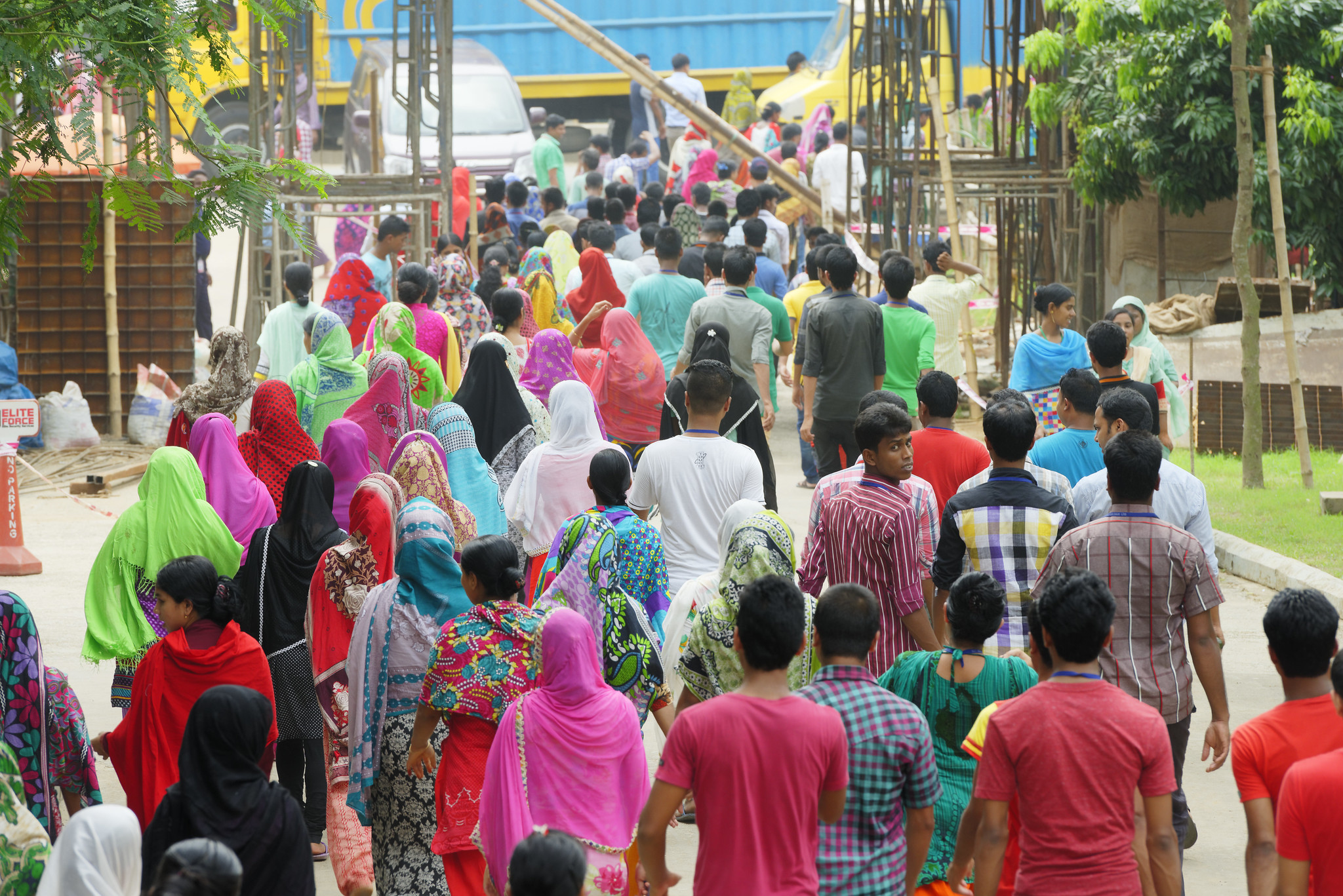
Labour Force Statistics (LFS, STLFS, RURBAN databases)
Concise description of concepts and definitions, uses, sources and limitations for labour force statistics in various databases (LFS, STLFS, RURBAN).

Work Statistics – 19th ICLS (WORK database)
Concise description of concepts and definitions, uses, sources and limitations for (paid and unpaid) work statistics based on the 19th ICLS standards.
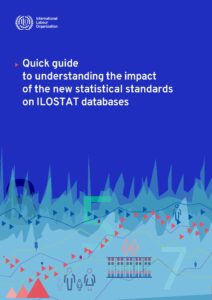
Quick guide to understanding the impact of the new statistical standards on ILOSTAT databases
This quick guide explains the differences between the 13th and 19th ICLS standards, the impact of the revisions on headline indicators, and how the ILO handles this on ILOSTAT.
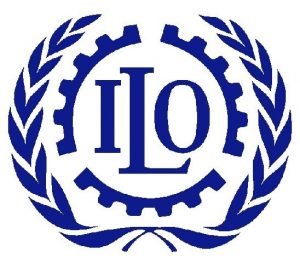
ILO model questions on economic characteristics for population censuses
This resource includes model question sequences suitable for inclusion in a census form to capture the UN recommended core and additional topics on economic activity, aligned with the latest standards adopted by the ICLS.
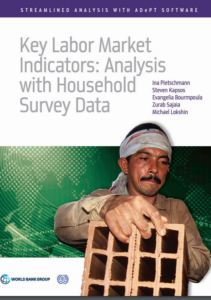
Key Labor Market Indicators: Analysis with Household Survey Data
This publication is an introduction to labour market indicator analysis and a guide for analysing household survey data using the ADePT ILO Labour Market Indicators Module. The ADePT module is a powerful tool for producing and analysing KILM indicators using household survey data. The software allows researchers and practitioners to automate data production, to minimize data production errors and to quickly produce a wide range of labour market data from labour force surveys or other household surveys that contain labour market information.

Decent Work Indicators – Guidelines for producers and users of statistical and legal framework indicators
This manual presents guidelines on the decent work statistical indicators and legal framework indicators. It is divided into eleven chapters which correspond to the ten substantive elements of decent work as well as to the economic and social context for decent work.
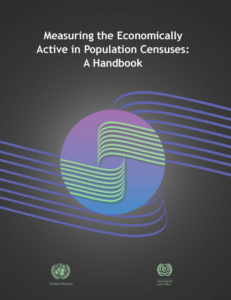
Measuring the Economically Active in Population Censuses: A Handbook
The Handbook (2010) provides guidance on the measurement of economic characteristics in population censuses, based on relevant experiences of countries, with a particular focus on the questions used and the requirements for processing of responses. The Handbook is intended to provide census planners with a variety of approaches to assess the questions and methods of collecting economic characteristics used in their national census, as they evaluate the performance in the past decade and plan for the 2010 round of censuses (2005-2014).

Sources and Methods Volume 3B: Labour force surveys (2011) – Source of statistics of the labour force and its components
This volume presents national methodological descriptions of statistics of employment, unemployment, underemployment, hours of work and other indicators derived from labour force and household surveys, disseminated on ILOSTAT. It is a revised and updated version of the third edition issued in 2004, and contains descriptions for 160 countries and territories and 169 surveys.

Sources and Methods Volume 5: Population censuses (2004) – Total and economically active population, employment and unemployment
This volume is an updated version of the second edition issued in 1996 which presented national methodological descriptions of population censuses carried out during the period 1989-94 in 115 countries, areas and territories. The first edition issued in 1990 covered the period 1945-89.

Sources and Methods Volume 3A: Household surveys (2004) – Economically active population, employment, unemployment and hours of work
This volume presents national methodological descriptions of statistics of employment, unemployment, underemployment, hours of work and other indicators derived from labour force and household surveys, disseminated on ILOSTAT. It is a revised and updated version of the second edition issued in 1990. This third edition contains descriptions for 83 countries.

Resolution concerning statistics of the economically active population, employment, unemployment and underemployment
Adopted by the 15th ICLS (1993), this resolution is designated as the International Classification of Status in Employment (ICSE-93) and classifies jobs held by persons at a point in time.
Publications
Note: Many publications are available only in English. If available in other languages, a new page will open displaying these options.




